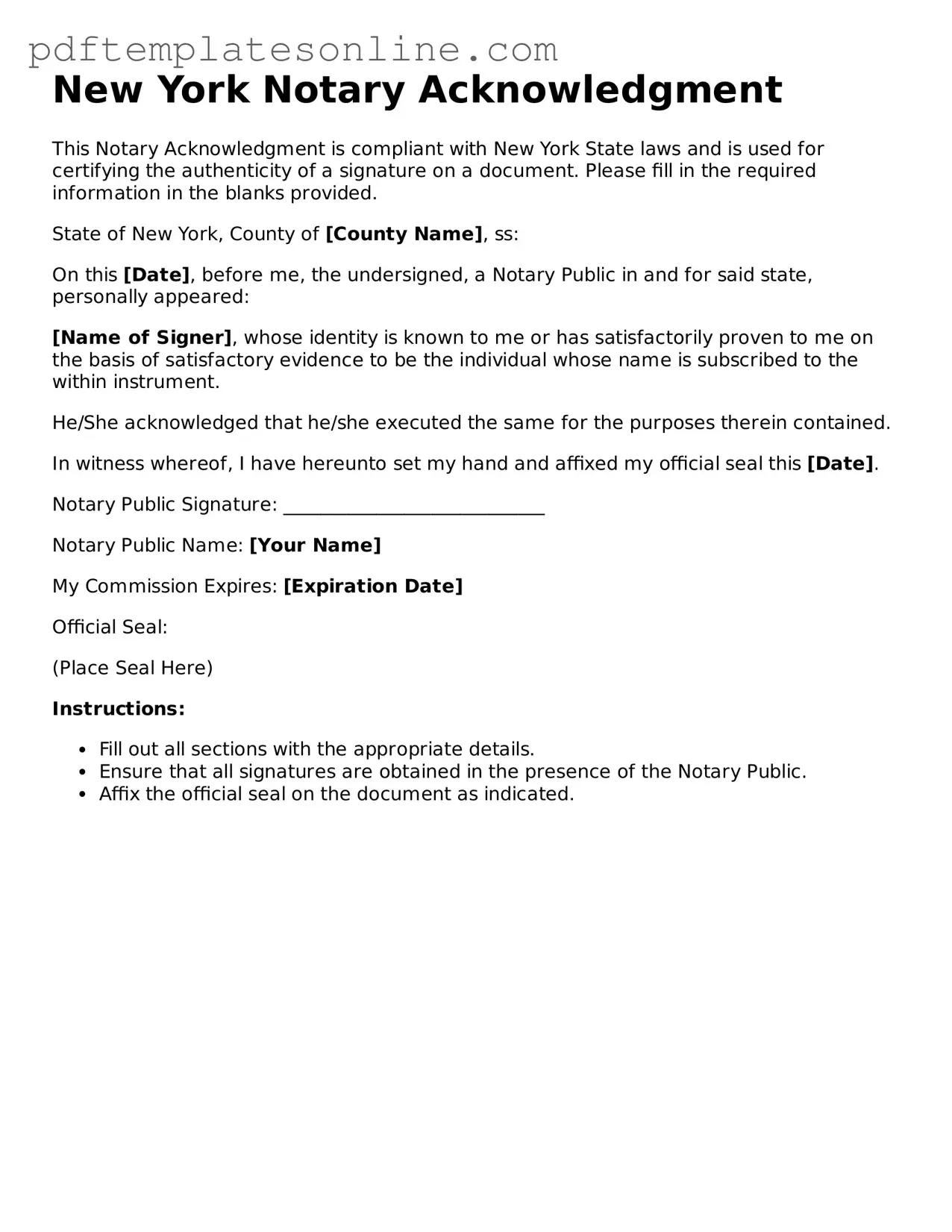Detailed Guide for Writing New York Notary Acknowledgement
Once you have the New York Notary Acknowledgement form in hand, you will need to complete it accurately. This form is essential for verifying the identity of the signer in various legal documents. Follow the steps below to ensure you fill it out correctly.
- Begin by entering the date of the acknowledgment at the top of the form.
- Next, write the name of the person whose signature you are acknowledging. This should be the individual who is signing the document.
- In the appropriate section, provide the address of the signer. This typically includes the street address, city, and state.
- Clearly indicate the type of identification the signer is providing. This could be a driver's license, passport, or another form of ID.
- Record the identification number from the ID. This helps verify the signer's identity.
- Next, fill in the notary's name as it appears on their commission. This should match the name on the notary's seal.
- Finally, sign the form in the designated area and affix your notary seal. Ensure that your signature and seal are clear and legible.
After completing the form, it is ready for submission along with the associated documents. Make sure to keep a copy for your records, as it may be needed for future reference.
